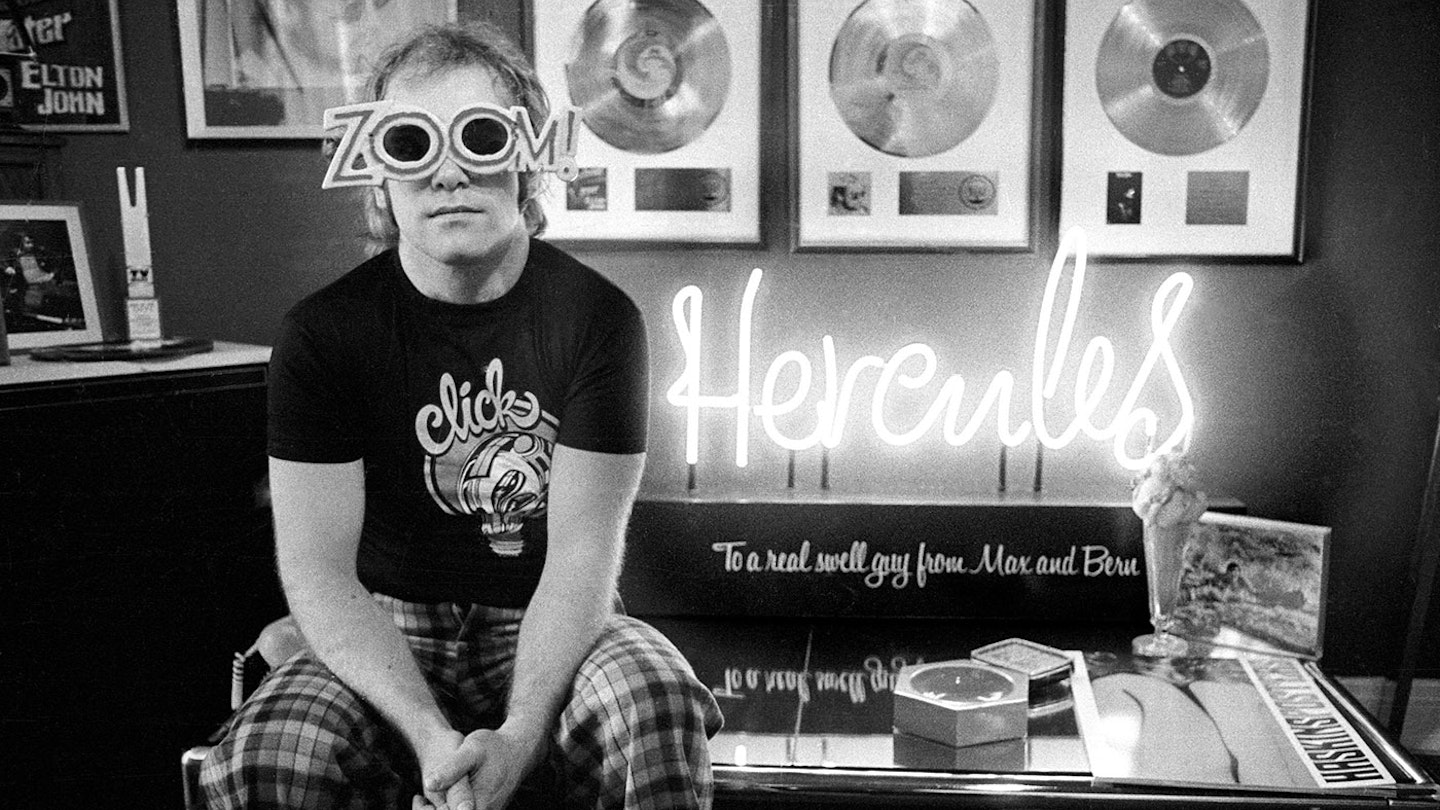The album that began Elton's staggering run of success.
Elton John
★★★★
Honky Château
UMR/EMI. CD/LP

IT SEEMS almost too much to take in now. When Honky Château swept to the top of the American charts in the summer of 1972 – the first Elton John album to reach Number 1 anywhere – it heralded a staggering run of global success. His subsequent six albums, including Greatest Hits, followed it. More staggering still, this was the beginning, not the peak, and over half a century later, he’s enjoying Farewell Yellow Brick Road, the highest-grossing tour of all time.
And yet Honky Château doesn’t sound like a massive album. It’s a pared down, more intimate version of its predecessor, Madman Across The Water. Restless after _Madman_flopped in the UK, John retained producer Gus Dudgeon, who overcame his reluctance to use John’s touring band in the studio, decamped to the “honky” Château d’ Hérouville just north of Paris and hired Jean-Luc Ponty to add electric violin to Mellow and Amy.
This time around, there are no undiscovered songs, but the album is re-mastered, there are Château demos of everything bar Amy and Mona Lisas And Mad Hatters, and eight live versions (no Slave or I Think I’m Going To Kill Myself) culled from a Royal Festival Hall show in London three months before release.
John’s piano at the Festival Hall brought a stentorian new dimension to a sped-up Rocket Man (I Think It’s Going To Be A Long Long Time) and the demos offer the sense of a band working out how to get the best from John’s freewheeling melodies. In the end, they turned out to be just what was required.
Unquestionably, John was searching for songwriterly authenticity. The sepia sleeve saw an unshaven John pitching himself midway between Stephen Stills and a Surf’s Up Beach Boy, but Mellow and Susie (Dramas) foreshadowed his work with Leon Russell, while Salvation takes a country detour as the band add what would become their trademark harmonies.
Lyrically, Bernie Taupin was as wry and off-kilter as the emerging Randy Newman, examining suicide on I Think I’m Going To Kill Myself and being, by turns, oblique, lascivious and sentimental. Slave – another Taupin excursion into American history – was actually about slavery, while Mona Lisas And Mad Hatters saw a wide-eyed suburban English boy experiencing New York for the first time.
The slight Honky Cat was (and remains) the runt of the Elton John singles litter, but Rocket Man was arguably the moment Taupin began writing about John as well as for him, albeit with added, very much of its time, space imagery. Honky Château might not be Elton John’s best album (it’s up there, but the catalogue is too big and too varied for such simplicities), but, setting the stage for global conquest, it’s surely his most pivotal.
The 50th Anniversary Edition of Honky Château is out 24 March via UMR/EMI
READ MOJO'S VERDICT ON ALL THE MONTH'S BEST MUSIC. Plus, receive every new issue of MOJO on your smart phone or tablet to listen to or read. Enjoy access to an archive of previous issues, exclusive MOJO Filter emails with the key tracks you need to hear each week, plus a host of member-only rewards and discounts by BECOMING A MOJO MEMBER
Picture: Barrie Wentzell
